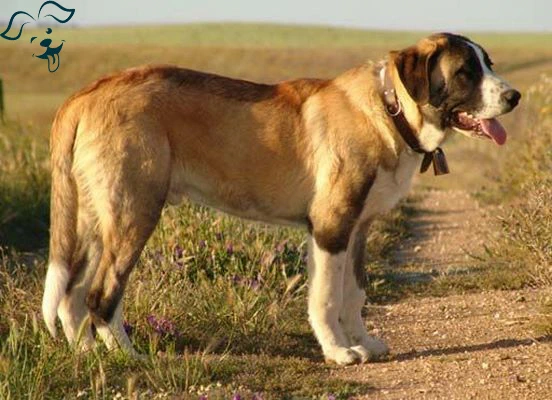CARING WITH FAMILY
|
| When it comes to the level of affection a breed is likely to exhibit towards family members and people they know well there can be significant variations. However, it's important to remember that individual dogs within a breed can also have their own unique personalities. |
LOVE WITH CHILDREN
Unwise
Good With Children
|
| The tolerance and patience of a breed towards children's behavior are important factors to consider when choosing a family-friendly dog. While it's important to note that individual dogs within a breed can display variation in temperament some breeds generally have a reputation for being more patient gentle and family-friendly. Nonetheless supervision is always crucial when dogs and children interact. Here are some breeds often known for their tolerance and family-friendly nature: |
BEHAVIOR WITH DOGS
Unwise
Good With Other Dogs
|
| Indeed, while the behavior of individual dogs can vary, there are certain breeds that are generally known for being more friendly and sociable towards other dogs. These breeds often exhibit a natural inclination towards getting along with their canine counterparts. However, it's important to note that proper socialization training and supervision are crucial for ensuring positive interactions between dogs regardless of breed. |
SHEDDING LEVELS & MANAGEMENT
No Shedding
Hair Everywhere
|
| The amount of fur and hair that you can anticipate the breed to shed. Breeds with excessive shedding will necessitate more frequent brushing have a higher probability of triggering specific allergies and will likely require more frequent vacuuming and lint-rolling. |
COAT GROOMING STANDARDS
|
| When evaluating the grooming effort needed, it is essential to consider how often a breed needs bathing, brushing, trimming or other types of coat maintenance. Take into account the amount of time, patience and budget you have available for this level of care. It is important to note that all breeds require regular nail trimming. |
DROOLING INTENSITY
Less Likely to Drool
Always Have a Towel
|
| Consider the tendency of a breed to drool. If you have a preference for cleanliness, breeds that have the tendency to leave ropes of slobber on your arm or create big wet spots on your clothes may not be the most suitable choice for you. |
COAT STYLES GUIDE |
| Double |
| COAT SPECTRUM |
| Short |
FRIENDLINESS
Reserved
Everyone Is My Best Friend
|
| Take into account the level of friendliness a breed is likely to exhibit towards strangers. Certain breeds may be reserved or cautious around unfamiliar individuals regardless of the setting, while other breeds will eagerly welcome and interact with new humans whenever they are around. |
LIVELINESS
Only When You Want To Play
Non-Stop
|
| Take into account the breed's level of enthusiasm for play even beyond the puppy stage. Certain breeds will maintain a strong desire to engage in activities like tug-of-war or fetch well into their adult years, while others will be content with relaxing on the couch with you for the majority of the time. |
VIGILANCE INTENSITY
What's Mine Is Yours
Vigilant
|
| Consider the breed's inclination to alert you of the presence of strangers. These breeds are more likely to react to any potential threat, whether it's the mailman or a squirrel outside the window. Additionally, these breeds are usually receptive to strangers who enter the house and are accepted by their family. |
ADAPTATION CAPACITY
Lives For Routine
Highly Adaptable
|
| Consider the adaptability of a breed to handle changes. This encompasses adjustments in living conditions, noise levels, weather conditions, daily schedules and other variations in day-to-day life. Some breeds exhibit greater ease in adapting to these changes, while others may find them more challenging. |
OBEDIENCE LEVEL
Self-Willed
Eager to Please
|
| Take into account the trainability of your dog and their willingness to learn new things. Certain breeds have a strong desire to please their owners and are generally easier to train, while others may have a more independent streak and prefer to do as they please, when and wherever they please. |
STAMINA LEVEL
|
| Consider the level of exercise and mental stimulation required by a breed. High-energy breeds are always ready and enthusiastic for their next adventure. They thrive on activities such as running, jumping and playing throughout the day. On the other hand, low-energy breeds resemble couch potatoes,they are content with lounging around and enjoying long snoozes. |
VOCALIZATION
|
| When Necessary |
LEARNING CURIOSITY LEVEL
Happy to Lounge
Needs a Job or Activity
|
| Consider the amount of mental stimulation required by the breed to maintain their happiness and overall health. Purpose-bred dogs often have jobs that involve decision-making, problem-solving, concentration and other cognitive qualities. Without adequate mental exercise, they may resort to creating their own projects to keep their minds occupied although these projects may not align with your preferences or desires. Providing sufficient mental stimulation is crucial to keep them engaged and prevent undesirable behaviors. |
| COLORS |
|
Description
|
Registration Code
|
|
Black
|
007
|
|
Fawn
|
082
|
|
Wolfgray
|
227
|
|
Yellow
|
232
|
|
Brindle
|
057
|
|
| PATTERNS |
|
Description
|
Registration Code
|
|
White Markings
|
014
|
|
White Markings, Black Mask
|
114
|
|
Spotted On White
|
071
|
|
Spotted On White, Black Mask
|
436
|
|






























FRIENDLINESS
LIVELINESS
VIGILANCE INTENSITY
ADAPTATION CAPACITY